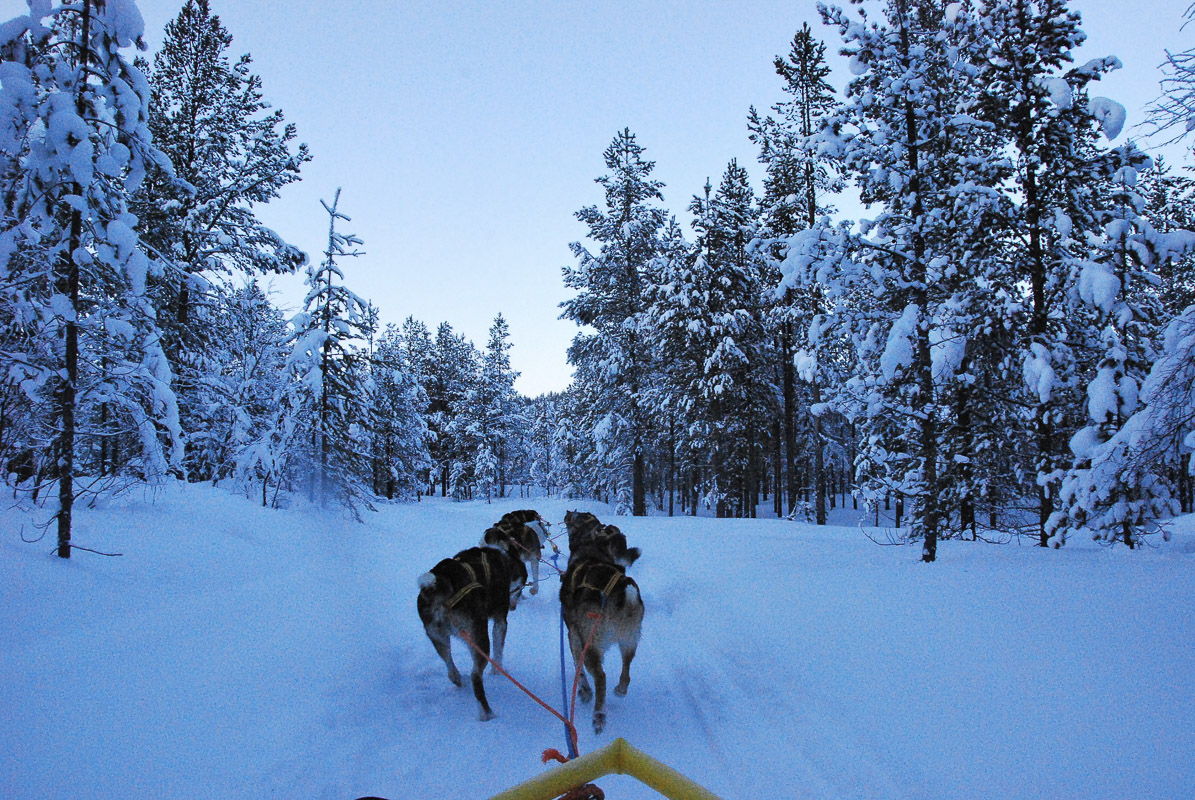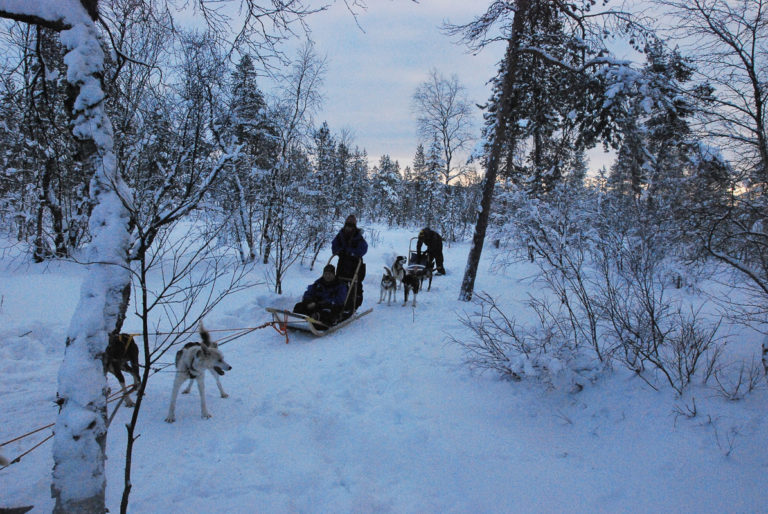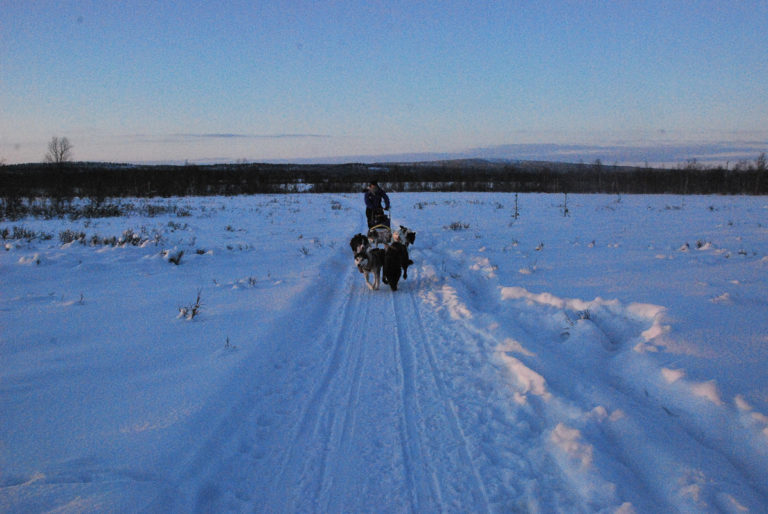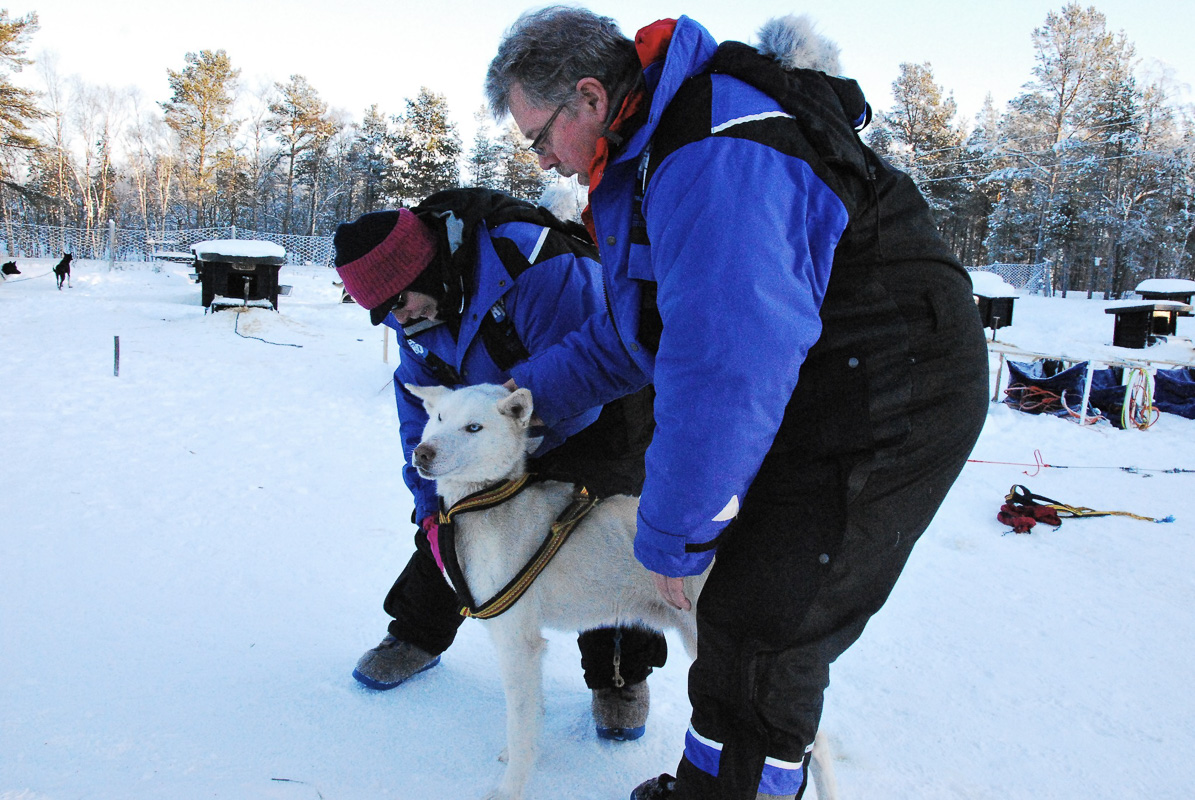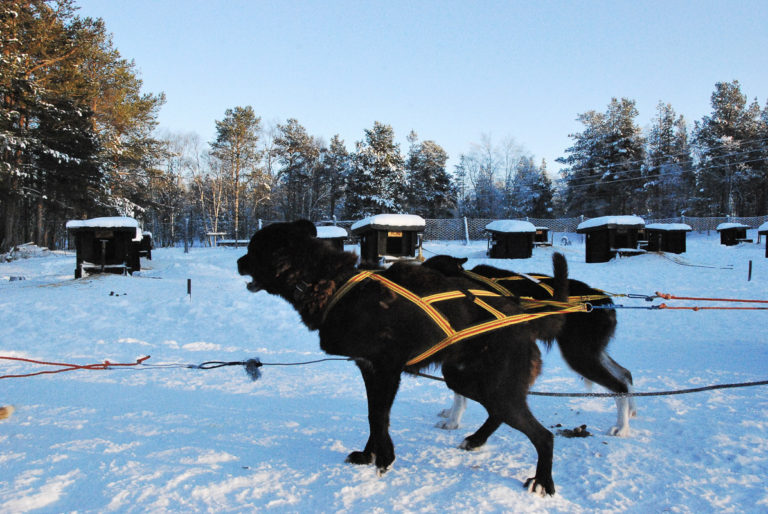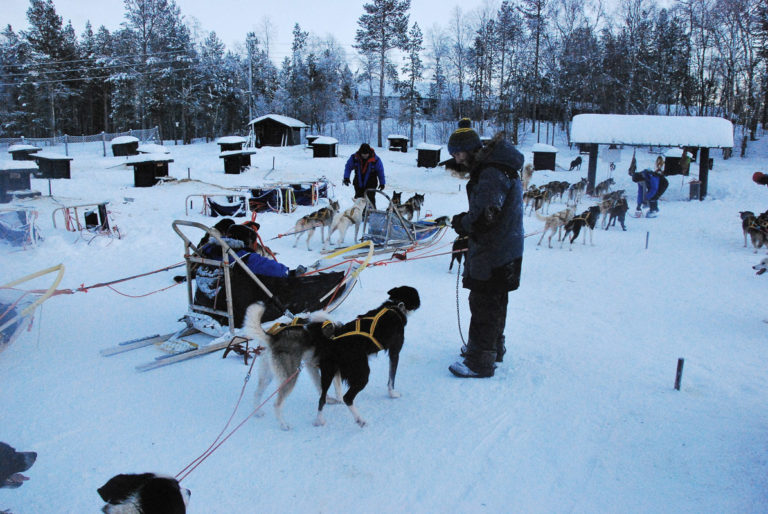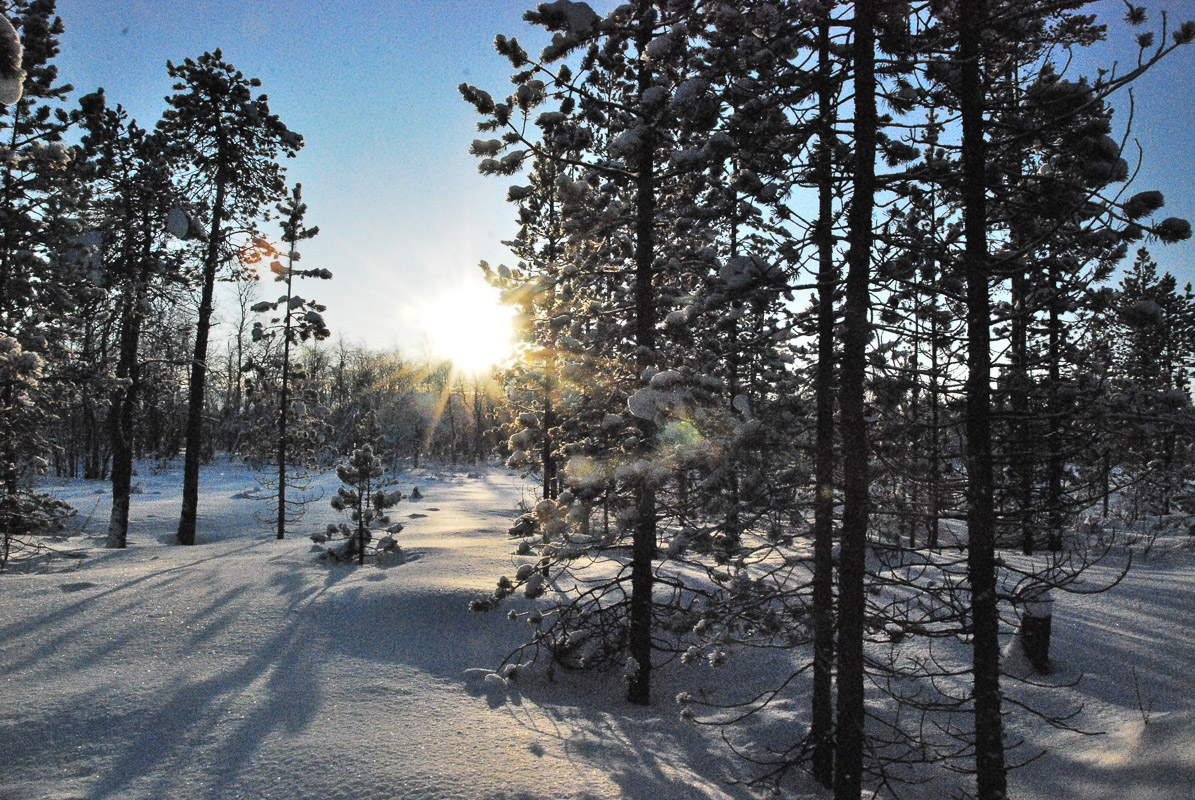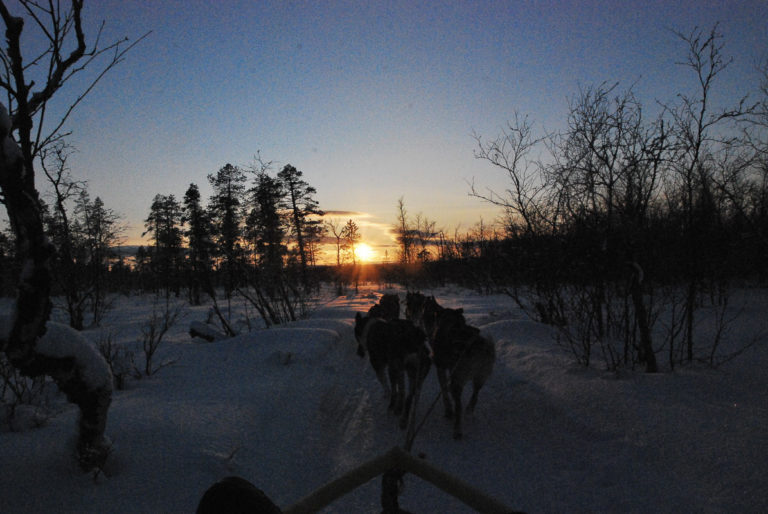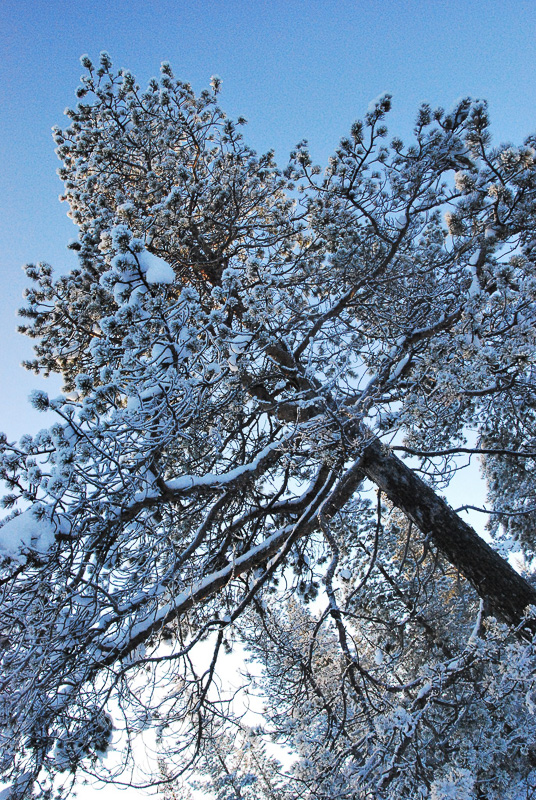One of Norway’s most distant destinations, the Pasvik valley, is best experienced on a dog sled in the winter. Join a journey of discovery in the “taiga”, a coniferous forest belt, and experience nature in its purest form.
All you can hear is the breathing of the dogs and the sound of the sled gliding over the snow. The frost glitters on the bark and needles of the low pine trees when they catch the low winter sun. Dense pine forest, frozen overhanging birch tree branches, the surfaces of frozen bogs and ice-covered lakes — these are the features of these deep, remote woods of Pasvik. Red rays of sun shine between the snow-covered branches, giving the snow a golden tone and causing the sparkling black birch twigs to cast long shadows on the ground.
The dogs are happy to see us
The dogs are obviously pleased to see us. They jump up on us and bark eagerly. Alaskan huskies are a relatively small and slim breed, but they are fast, strong and very sociable. Our guides, Luke and Sam from England, give us a quick introduction on how to harness a dog. First we collect the dog from its kennel, then we take a firm grip on its collar and pull it up so it is standing on two legs. At the sled, we put on the harness and find that the dog helps by bending his front legs to make it easier to put on the harness — they are certainly patient with novices.
Once we set off, the dogs go silent
All the preparations take place amidst some noisy barking from the dogs as they can hardly wait to get away. Once everything is ready it’s important to get going quickly: the anchor is removed and off you go with a jerk. The dogs are now completely silent and all you can hear is their breathing. We stop from time to time, and the musher has to stand on the brake hard enough to prevent the dogs from setting off again. The terrain is pretty varied — we are taken down into a frozen river bed, into the woods and out on the ice of a frozen lake.
It’s easy to drive a god sled
Most people can drive a dog sled. The most important thing to remember is to hold on tight. You stand on the two runners, and hold tight on the frame. On the downhill stretches you brake with the hoop-shaped brake between the runners, and uphill you might have to run after the sled to help the dogs out. If you find you are swerving too much to the left, you stand on the right runner with both feet. It’s all pretty intuitive, and you don’t go particularly fast but if you do fall you land in nice soft snow.
The taiga is the deep, northern forest
The Pasvik Valley is the most westerly stretch of the taiga, the coniferous forest belt that runs from the Bering Strait through the whole of Siberia and Northern Russia. The landscape is flat with just a few low hills, and is covered with deep pine forests, mixed here and there with Russian spruce. This forest is home to Norway’s largest population of bears, wolves, lynx and, lately, raccoon dog. The bird population in the area is dominated by Eastern coniferous species.

